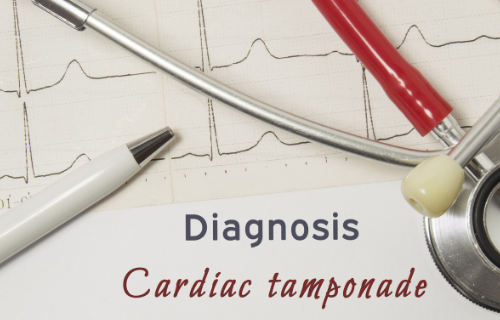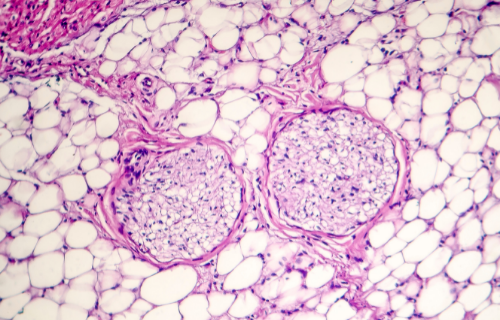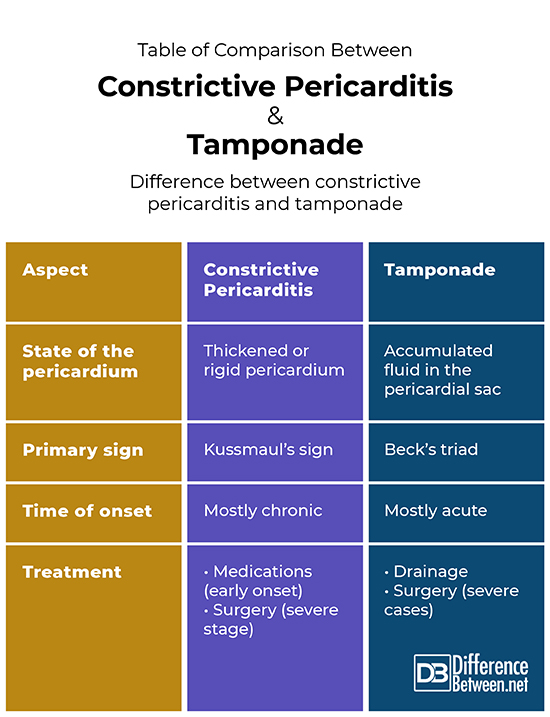Difference Between Constrictive Pericarditis and Tamponade

Constrictive pericarditis and tamponade (also referred to as cardiac tamponade or pericardial tamponade) are both conditions of the pericardium. These two pathologies of the pericardium often present with numerous symptoms of the same nature, making it challenging to differentiate or distinguish which one is applicable. There are, however, diagnostic tests and procedures which provide a clearer answer of the condition at hand.

Difference between Constrictive Pericarditis and Tamponade
Definition and Pathophysiology
Constrictive pericarditis is a chronic condition where there is thickening of the pericardium over time. This thickening causes the pericardium (the sac covering the outside of the heart) to gradually lose elasticity and therefore restricts the heart from expanding fully when breathing in. The restriction experienced by the heart muscle leads to increased diastolic pressures and a quicker increase of ventricular pressures, this is specifically because of the limited ability of the ventricular chambers of the heart to relax. Moreover, what would usually be normal decreased intrathoracic pressure (pressures inside the chest) during inspiration (breathing in) does not carry over to the pressures inside the heart. The resultant effect is that the pulmonary venous pressure drops, causing a reduced left-sided stroke volume upon breathing in.
Cardiac tamponade is an acute condition where there is an abnormal amount of fluid accumulated in the pericardium (or pericardial sac). The abnormal build-up of fluid causes a compressive effect on the heart muscle and is seen as a medical emergency. The compression effect cardiac tamponade has on the heart causes the diastolic filling function of the heart to decrease, which further leads to a compromised cardiac output.
Potential causes
The causes of constrictive pericarditis are not always easy to diagnose. The more common causes however could be a result of heart surgery or trauma to the heart (such as a heart attack), chronic infection such as tuberculosis, or radiation therapy targeted at the chest area. Additional causes (although less common) could be bacterial and viral infections, autoimmune disorder complications, complications as a result of medications, or certain types of cancer.
Cardiac tamponade is usually caused by trauma or acute conditions. This includes traumatic wounds to the pericardium (such as a gunshot or stab wound), blunt chest trauma, pericarditis, hyperthyroidism, a complication of kidney failure, autoimmune diseases, radiation, and certain cancers.
Symptoms
The symptoms associated with constrictive pericarditis and cardiac tamponade are often similar, but differences do occur.
The symptoms most often presented in patients with constrictive pericarditis are:
- Difficulty breathing that gradually becomes worse
- Increased fatigue and weakness
- Swelling in the abdomen with severe swelling in the legs and over the ankles
- Low fever
- Chest pain
The symptoms most often presented in patients suffering cardiac tamponade are:
- Low blood pressure, feeling faint, dizziness, and/or loss of consciousness
- Intense and rapid breathing
- Anxiety and feeling restless
- Trouble breathing or inability to breathe deeply
- Improvement of discomfort when leaning forward or sitting up
- Chest pain that radiates to the back, jaw and shoulders
Diagnosis
Constrictive pericarditis can be challenging to diagnose because it presents symptoms that could be confused with other heart conditions. Due to this challenge, physicians often primarily diagnosed by ruling out other heart conditions. Patients with constrictive pericarditis often show signs (along with the above-mentioned symptoms), with the primary one being Kussmaul’s sign. Kussmaul’s sign is described as protruding neck veins due to increased blood pressure. Additional signs are weak heart sounds, fluid in the abdomen and a swollen liver.
Tests are also performed to make a diagnosis. These include:
- Scans and x-rays (to identify any blood clots and a thick pericardium)
- Cardiac catheterization (to take samples directly from the heart tissue and perform measurements)
- Electrocardiogram (to detect electrical irregularities coming from the heart)
Diagnosing cardiac tamponade is usually associated with Beck’s triad. Beck’s triad consists of three main signs which include low blood pressure, extended neck veins, and a rapid heartbeat present with muffled heart sounds.
Tests performed to aid in making an accurate diagnosis include:
- Scans of the chest (to look for accumulated fluid in the pericardium)
- An angiogram (to see the blood flow within the heart)
- Electrocardiogram (to detect electrical irregularities coming from the heart)
Treatment
In the early onset, constrictive pericarditis can be treated by diuretics to remove excess water, pain medication, anti-inflammatories, corticosteroids, decreasing activity, and taking colchicine. When the condition is in a severe state, surgery to cut away the rigid parts of the pericardium (a pericardiectomy) can be performed.
Cardiac tamponade is usually treated by draining built up fluid from the pericardial sac with the use of a needle. If the condition is severe, it may need to be treated by removing clots and fluid surgically and potentially cutting away parts of the pericardium to relieve the pressure.
Table of comparison between constrictive pericarditis and tamponade

Summary of Constrictive Pericarditis vs Tamponade
Constrictive pericarditis and cardiac tamponade often present similarly on initial exam. However, constrictive pericarditis occurs with a thickened and rigid pericardium, where cardiac tamponade occurs with fluid accumulation within the pericardial sac. Specialized testing and primary signs distinguish the two conditions for accurate diagnosis and effective treatment.
FAQ
Is constrictive pericarditis the same as tamponade?
No. Constrictive pericarditis presents a thickened and rigid pericardium, where cardiac tamponade presents fluid accumulation within the pericardial sac.
Can constrictive pericarditis cause cardiac tamponade?
Constrictive pericarditis is generally a chronic condition, but a sub-acute occurrence caused by an underlying type of effusion related pericarditis can cause cardiac tamponade to occur too.
What is the difference between pericardial effusion and tamponade?
Pericardial effusion is the term used to describe the accumulated fluid. The accumulated fluid (pericardial effusion) then results in tamponade.
What are the three signs of cardiac tamponade?
Three main signs include low blood pressure, extended neck veins, and a rapid heartbeat present with muffled heart sounds.
- Difference Between a Cochlear Implant and Normal Hearing - October 4, 2022
- Difference Between Obstructive and Restrictive Spirometry - September 11, 2022
- The Difference Between White Box and Black Box Testing - September 11, 2022
Search DifferenceBetween.net :
Leave a Response
References :
[0]Fateen, Ata., Osman, Omnia., Javed, Saad., Muthanna, Bassam and Abushahba, Galal. A Conundrum of Diagnostic Analogy Between Constrictive Pericarditis and Pericardial Tamponade. Cureus. 2020, vol. 12, no. 7, e9036.
[1]Geske, Jeffrey and Reddy, Yogesh. Pathophysiology and Diagnosis of Constrictive Pericarditis. American College of Cardiology. 2017. https://www.acc.org/latest-in-cardiology/articles/2017/03/13/15/10/pathophysiology-and-diagnosis-of-constrictive-pericarditis
[2]Stashko, Eric and Meer, Jehangir. Cardiac Tamponade. https://www.ncbi.nlm.nih.gov/books/NBK431090/
